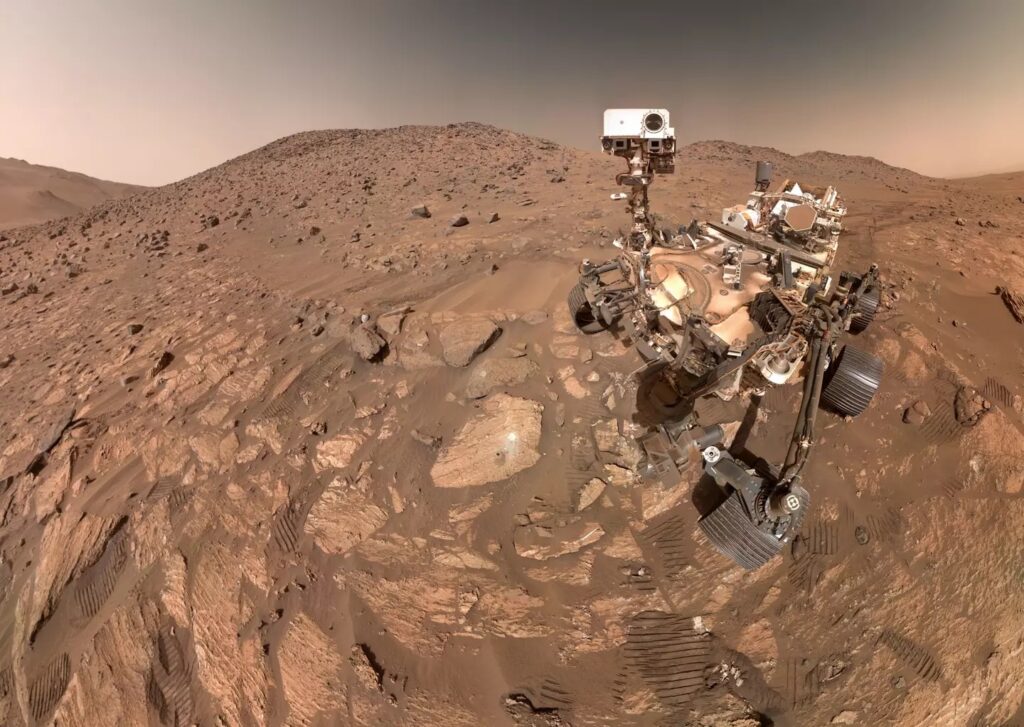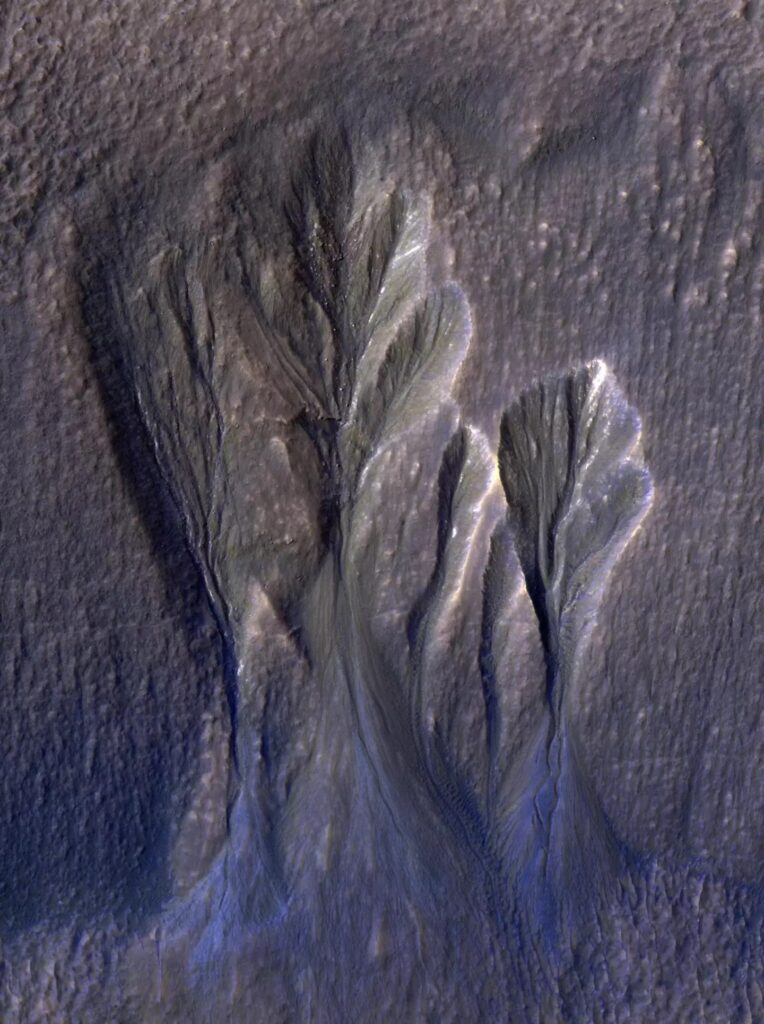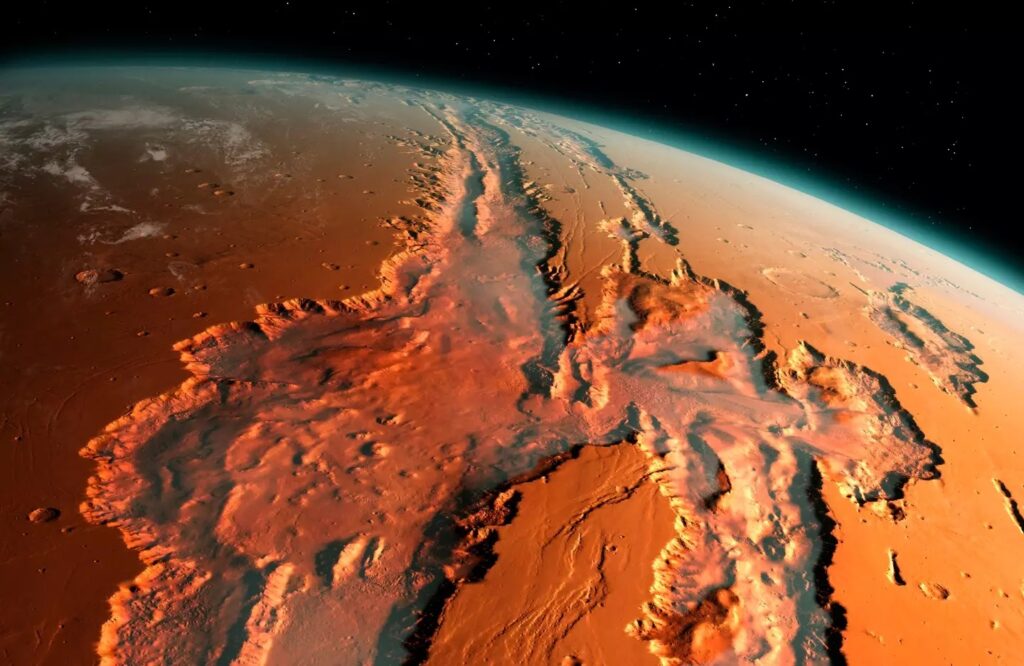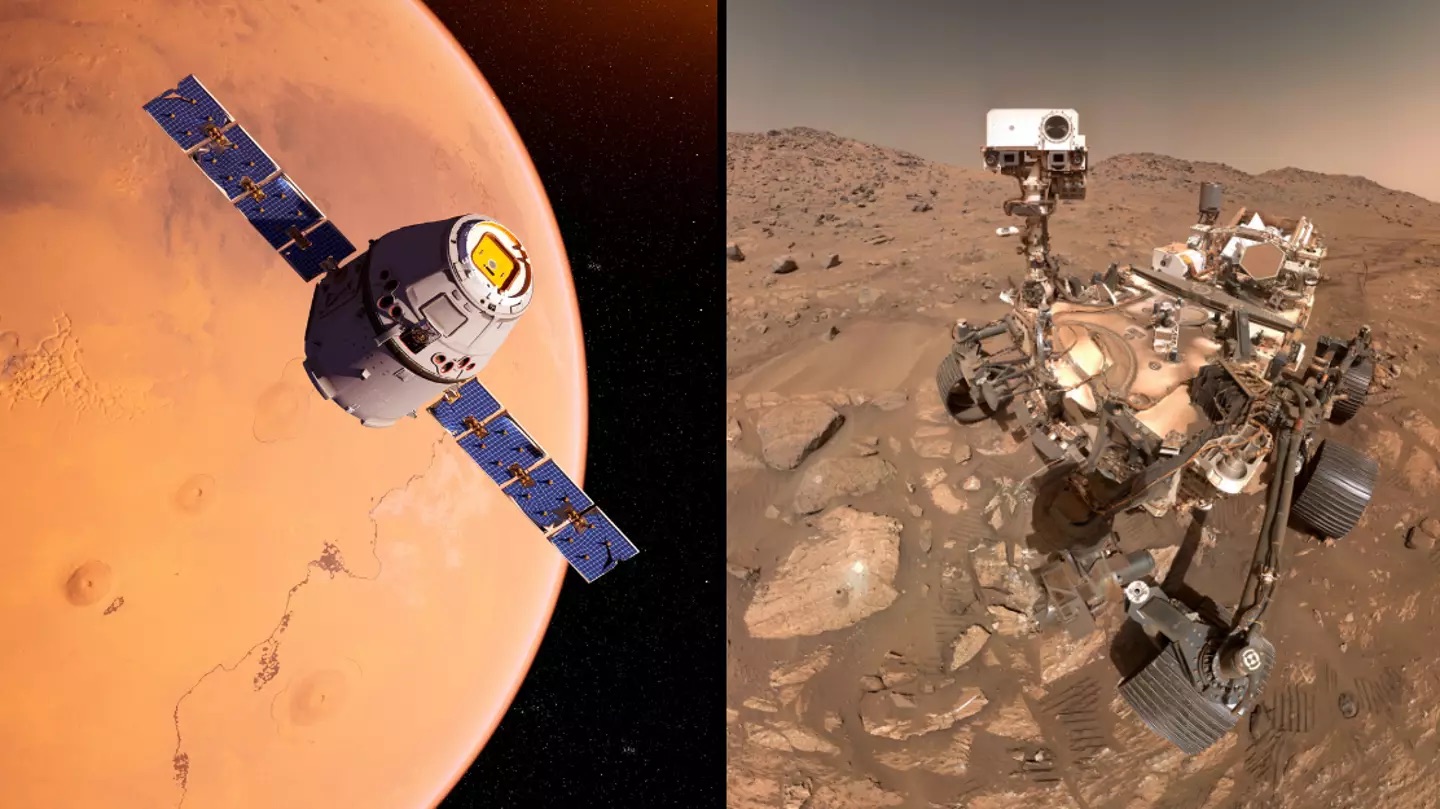A recent NASA study suggests that extraterrestrial life may be closer to Earth than previously thought. For years, Mars has been the primary focus of scientists searching for alien life, inspiring numerous films and shows about its potential inhabitants.
While Hollywood has enjoyed imagining scenarios like “Mars Attacks!” with Pierce Brosnan’s head humorously attached to a dog, scientific efforts are returning to the serious possibility of finding small, non-green forms of life on Mars.
NASA’s Jet Propulsion Laboratory (JPL) led a study that investigates the possibility of life beneath the Martian surface, with lead author Aditya Khuller advocating for a deeper look into Martian ice layers.

Khuller explains, “If we’re looking for life anywhere today, exposed Martian ice is one of the best places to search.” Mars is known to contain water and features two types of ice: frozen water and frozen carbon dioxide.
Published in Nature Communications Earth & Environment, Khuller’s team examined water ice that formed from ancient snow and dust that accumulated during past Martian ice ages over millions of years. This snow compacted into ice mixed with dark dust that absorbs sunlight, potentially causing melting beneath the surface.

This environment suggests that microbes could survive—and potentially even thrive—within the frozen water ice, where photosynthesis might take place. On Earth, similar icy regions host diverse life forms, including fungi, algae, and cyanobacteria.
Although Mars has a thin, dry atmosphere that prevents surface melting, this doesn’t hinder melting beneath a layer of dusty snow or glacier. Co-author Phil Christensen from Arizona State University notes that inner melting is common on Earth. He explains, “Dense snow and ice can melt from the inside out, with sunlight penetrating and warming it like a greenhouse.”

To better understand this process, the research team plans to recreate Martian-like dusty ice in a lab, simulating the conditions on Mars.
